Using Specification and Description Language for Life Cycle Assesment in Buildings
Abstract
:1. Introduction
2. State of the Art
3. Methodology
3.1. Specification and Description Language
 This element defines the initial condition for a PROCESS diagram.
This element defines the initial condition for a PROCESS diagram. The state element contains the name of a state. This element defines the states of behavioral diagrams, such as PROCESS diagrams.
The state element contains the name of a state. This element defines the states of behavioral diagrams, such as PROCESS diagrams. Input elements describe the type of events that can be received by the process. All branches of a specific state start with an Input element because an object only changes its state when a new event is received.
Input elements describe the type of events that can be received by the process. All branches of a specific state start with an Input element because an object only changes its state when a new event is received. This element allows the creation of an agent.
This element allows the creation of an agent. This element allows the interpretation of informal texts or programming code. In this paper, following SDL-RT (PragmaDev SARL, 2006), we used C code.
This element allows the interpretation of informal texts or programming code. In this paper, following SDL-RT (PragmaDev SARL, 2006), we used C code. These elements perform a procedure call. A PROCEDURE can be defined in the last level of the SDL language and used to encapsulate pieces of the model for reuse.
These elements perform a procedure call. A PROCEDURE can be defined in the last level of the SDL language and used to encapsulate pieces of the model for reuse. Output elements describe the types of signals to be sent, the parameters that the signal carries, and the destination. If ambiguity about the signal destination exists, communication can be directed by specifying destinations using a processing identity value (PId), an agent name, or using the sentence via path. If there is more than one path and no specific output is defined, an arbitrary one is used. The destination value can be stored in a variable for later use. Four PId expressions can be used: (i) self, an agent’s own identity; (ii) parent, the agent that created the agent (Null for initial agents); (iii) offspring, the most recent agent created by the agent; and (iv) sender, the agent that sent the last signal input (null before any signal received).
Output elements describe the types of signals to be sent, the parameters that the signal carries, and the destination. If ambiguity about the signal destination exists, communication can be directed by specifying destinations using a processing identity value (PId), an agent name, or using the sentence via path. If there is more than one path and no specific output is defined, an arbitrary one is used. The destination value can be stored in a variable for later use. Four PId expressions can be used: (i) self, an agent’s own identity; (ii) parent, the agent that created the agent (Null for initial agents); (iii) offspring, the most recent agent created by the agent; and (iv) sender, the agent that sent the last signal input (null before any signal received). These elements describe bifurcations. Their behavior depends on how the related question is answered.
These elements describe bifurcations. Their behavior depends on how the related question is answered. . These diagrams are very similar to the PROCESS diagrams with the exception that they do not need state definitions.
. These diagrams are very similar to the PROCESS diagrams with the exception that they do not need state definitions.3.2. The Model
4. Results
5. Executing on the Cloud: NECADA
5.1. Description of the Current Platform
5.2. A Smart House Connected through SDL and IoT
6. Discussion
7. Conclusions
Author Contributions
Conflicts of Interest
Abbreviations
| ANSI | American National Standards Institute |
| ASHRAE | American Society of Heating, Refrigerating, and Air-Conditioning Engineer |
| BRGF | Biblioteca Sector Gabriel Ferraté |
| (e)CO | Equilibrium through Cooperation |
| ISO | International Organization for Standardization |
| LCA | Life Cycle Assesment |
| SDL | Specification and Description Language |
References
- IEA. Energy Efficiency Market Report; IEA: Paris, France, 2014. [Google Scholar]
- ICER. Energy Efficiency Potential in the U.S.: 2012 through 2035. Available online: http://www.icer-regulators.net/portal/page/portal/ICER_HOME/publications_press/ICER_Chronicle/Art2_10a.html (accessed on 2 May 2017).
- Van der Grintern, B. Cradle to Cradle in a Nutshell. 2008. Available online: http://www.bluehaired.com/corner/wp-content/uploads/2009/12/Cradle-to-Cradle-in-a-nutshell-Bram-van-der-Grinten-2008.pdf (accessed on 2 May 2017).
- Rønning, A.; Brekke, A. Life cycle assessment (LCA) of the building sector: Strengths and weaknesses. In Eco-Efficient Construction and Building Materials; Woodhead Publishing: Sawston, UK, 2014; pp. 63–83. [Google Scholar]
- Hollberg, A.; Ruth, J. LCA in architectural design—A parametric approach. Int. J. Life Cycle Assess. 2016, 21, 943–960. [Google Scholar] [CrossRef]
- Means, P.; Guggemos, A. Framework for Life Cycle Assessment (LCA) Based Environmental Decision Making During the Conceptual Design Phase for Commercial Buildings. Proced. Eng. 2015, 118, 802–812. [Google Scholar] [CrossRef]
- Vilches, A.; Garcia-Martinez, A.; Sanchez-Montañes, B. Life cycle assessment (LCA) of building refurbishment: A literature review. Energy Build. 2016, 135, 286–301. [Google Scholar] [CrossRef]
- Anand, C.; Amor, B. Recent developments, future challenges and new research directions in LCA of buildings: A critical review. Renew. Sustain. Energy Rev. 2017, 67, 408–416. [Google Scholar] [CrossRef]
- BPIE. Principles for Nearly Zero-Energy Buildings. Paving the Way for Effective Implementation of Policy Requirements; Buildings Performance Institute Europe: Brussels, Belguim, 2011. [Google Scholar]
- Salom, J.; Widén, J.; Candanedo, J.; Sartori, I.; Voss, K.; Marszal, A. Understanding net zero energy buildings: Evaluation of load matching and grid interaction indicators. In Proceedings of the Building Simulation 2011: 12th Conference of International Building Performance Simulation Association, Sydney, Australia, 14–16 November 2011. [Google Scholar]
- Sartori, I.; Napolitano, A.; Voss, K. Net zero energy buildings: A consistent definition framework. Energy Build. 2012, 48, 220–232. [Google Scholar] [CrossRef]
- Salom, J.; Cubí, E.; Sánchez, A. Busando una definición concreta para un objetivo amplio. CIC Arquitectura y Construcción 2011, 485, 54–57. [Google Scholar]
- Salom, J.; Cubí, E.; Sartori, I. Edificio de energía cero: Definiciones e interacción con las redes energéticas. In Libro de Comunicaciones I Congreso EECN; EECN: Madrid, Spain, 2012. [Google Scholar]
- Llera-Sastresa, E.; Scarpellini, S.; Rivera-Torres, P.; Aranda, J.; Zabalza-Bribián, I.; Aranda-Usón, A. Energy Vulnerability Composite Index in Social Housing, from a Household Energy Poverty Perspective. Sustainability 2017, 9, 691. [Google Scholar] [CrossRef]
- EeBGuide. The EeBGuide Project. Operational Guidance for Life Cycle Assessment Studies of the Energy Efficient Buildings Initiative; Fraunhofer-Gesellschaft: Munich, Germany, 2013. [Google Scholar]
- SUDOE. EnerBuiLCA. 2012. Available online: http://4.interreg-sudoe.eu/contenido-dinamico/libreria-ficheros/8656A5AF-B808-1CEB-5C83-37836BB24FAA.pdf (accessed on 7 June 2017).
- CEN/TC 350. Sustainability of Construction Works; European Committee for Standardization: Brussels, Beguim, 2012. [Google Scholar]
- Laëtitia, A.; Olivier, B.; Pascal, R.; Daniel, Q.; Pascal, R. A simple method to consider energy balance in the architectural design of residential buildings. In Proceedings of the Symposium on Simulation for Architecture and Urban Design, Boston, MA, USA, 3–7 April 2011; pp. 115–122. [Google Scholar]
- Sattrup, P.A.; Strømann-Andersen, J.B. A methodological study of environmental simulation in architecture and engineering: Integrating daylight and thermal performance across the urban and building scales. In Proceedings of the 2011 Symposium on Simulation for Architecture and Urban Design, Boston, MA, USA, 3–7 April 2011; Attar, R., Ed.; Society for Computer Simulation International: San Diego, CA, USA, 2011; pp. 115–123. [Google Scholar]
- Sodja, A.; Zupančič, B. Modelling thermal processes in buildings using an object-oriented approach and Modelica. Simul. Model. Pract. Theory 2009, 17, 1143–1159. [Google Scholar] [CrossRef]
- Counsell, J.M.; Khalid, Y.A.; Brindley, J. Controllability of buildings: A multi-input multi-output stability assessment method for buildings with slow acting heating systems. Simul. Model. Pract. Theory 2011, 19, 1185–1200. [Google Scholar] [CrossRef]
- Liu, B.; Duan, S. Energy efficiency evaluation of building integrated photovoltaic systems with different power configurations. Simul. Model. Pract. Theory 2012, 29, 93–108. [Google Scholar] [CrossRef]
- Bruno, M.; Henderson, K.; Kim, H. Multi-objective optimization in urban design. In Proceedings of the 2011 Symposium on Simulation for Architecture and Urban Design, Boston, MA, USA, 3–7 April 2011; Attar, R., Ed.; Society for Computer Simulation International: San Diego, CA, USA, 2011; pp. 102–109. [Google Scholar]
- Zeigler, B.P.; Praehofer, H.; Kim, T.G. Theory of Modeling and Simulation Handbook of Simulator-Based Training Creating Computer Simulation Systems: An Introduction to the High Level Architecture; Academic Press: Waltham, MA, USA, 2000. [Google Scholar]
- ITU-T. Specification and Description Language—Overview of SDL-2010; ITU: Geneva, Switzerland, 2011. [Google Scholar]
- Doldi, L. SDL Illustrated—Visually Design Executable Models; TMSO Multimedia: Toulouse, France, 2001. [Google Scholar]
- Cabasino, M.P.; Giua, A.; Seatzu, C. Introduction to Petri Nets. Lect. Notes Control Inf. Sci. 2013, 433, 191–211. [Google Scholar]
- Ahmed, A.S.; Wainer, G.; Mahmoud, S. Integrating building information modeling & cell-DEVS simulation. In Proceedings of the 2010 Spring Simululation Multiconference, Orlando, FL, USA, 11–15 April 2010; Society for Computer Simulation International: San Diego, CA, USA, 2001. [Google Scholar] [CrossRef]
- Trčka, M.; Hensen, J.L.M.; Wetter, M. Co-simulation for performance prediction of integrated building and HVAC systems—An analysis of solution characteristics using a two-body system. Simul. Model. Pract. Theory 2010, 18, 957–970. [Google Scholar] [CrossRef]
- Stahl, I.; Born, R.G.; Henriksen, J.O.; Herper, H. GPSS 50 years old, but still young. In Proceedings of the 2011 Winter Simulation Conference, Phoenix, AZ, USA, 11–14 December 2011; pp. 3947–3957. [Google Scholar]
- O’Reilly, J.J. Optimization test problems with uniformly distributed coefficients. In Proceedings of the 1991 Winter Simulation Conference, Phoenix, AZ, USA, 8–11 December 1991. [Google Scholar]
- Jones, J. SIMPROCESS III: Object-oriented business process simulation. In Proceedings of the 1995 Winter Simulation Conference, Arlington, VA, USA, 3–6 December 1995. [Google Scholar]
- Altiok, T.; Melamed, B. Simulation Modeling and Analysis with ARENA; Academic Press: Waltham, MA, USA, 2007. [Google Scholar]
- Pegden, C.D.; Sturrock, D.T. Introduction to Simio. In Proceedings of the 2011 Winter Simulation Conference, Phoenix, AZ, USA, 11–14 December 2011; pp. 29–38. [Google Scholar]
- Concepcion, A.I.; Zeigler, B.P. DEVS formalism: A framework for hierarchical model development. IEEE Trans. Softw. Eng. 1988, 14, 228–241. [Google Scholar] [CrossRef]
- Vangheluwe, H.L.M. DEVS as a common denominator for multi-formalism hybrid systems modelling. In Proceedings of the IEEE International Symposium on Computer-Aided Control System Design (Cat. No.00TH8537), Anchorage, AK, USA, 25–27 September 2000; IEEE: New York, NY, USA, 2000; pp. 129–134. [Google Scholar]
- Shang, H.; Wainer, G. A Simulation Algorithm for Dynamic Structure DEVS Modeling. In Proceedings of the 2006 Winter Simulation Conference, Monterey, CA, USA, 3–6 December 2006; pp. 815–822. [Google Scholar]
- Goldstein, R.; Khan, A.; East, K.S. Development of discrete event system specification (DEVS) building performance models for building energy design. In Proceedings of the Symposium on Simulation for Architecture & Urban Design, San Diego, CA, USA, 7–10 April 2013. [Google Scholar]
- Gotzhein, R.; Krämer, M.; Litz, L.; Chamaken, A. Energy-aware system design with SDL. In Lecture Notes in Computer Science (Including Subseries Lecture Notes in Artificial Intelligence and Lecture Notes in Bioinformatics); Springer: Berlin, Germany, 2009; pp. 19–33. [Google Scholar]
- Fonseca i Casas, P.; Fonseca i Casas, A.; Garrido-Soriano, N.; Casanovas, J. Formal simulation model to optimize building sustainability. Adv. Eng. Softw. 2014, 69, 62–74. [Google Scholar] [CrossRef]
- Sargent, R. Verification and validation of simulation models. In Proceedings of the 2009 Winter Simulation Conference, Austin, TX, USA, 13–16 December 2009; Rossetti, M.D., Hill, R.R., Johansson, B., Dunkin, A., Ingalls, R.G., Eds.; IEEE: New York, NY, USA, 2009; pp. 162–176. [Google Scholar]
- Alfaro Garrido, L.; Lucas Masero, J.; Díez Bernabé, G. New tool to identify environmental impacts on the construction. In Proceedings of the VII Congreso Europeo sobre Eficiencia Energética y Sostenibilidad en Arquitectura y Urbanismo, San Sebastian, Spain, 4–6 July 2016. [Google Scholar]
- AEN/CTN. Evaluación de la Sostenibilidad en los Edificios. Parte 4: Marco para la Evaluación del Comportamiento Económico; UNE-EN 15643-4:2012; AENOR: Madrid, Spain, 2012. [Google Scholar]
- Baayen, H. Eco-indicator 99 Manual for Designers; Ministry of Housing, Spatial Planning and the Environment: The Hague, The Netherlands, 2000.
- EnergyPlus. Input Output Reference the Encyclopedic Reference to EnergyPlus Input and Output; U.S. Department of Energy: Washington, DC, USA, 2014.
- Fonseca i Casas, P.; Fonseca i Casas, A.; Garrido-Soriano, N.; Ortiz, J.; Casanovas, J.; Salom, J. Optimal Buildings’ Energy Consumption Calculus through a Distributed Experiment Execution. Math. Probl. Eng. 2015, 2015, 1–12. [Google Scholar] [CrossRef]
- Fonseca i Casas, P. SDL distributed simulator. In Proceedings of the 2008 Winter Simulation Conference, Miami, FL, USA, 7–10 December 2008. [Google Scholar]
- Fonseca i Casas, P.; Pi Palomés, X.; Casanovas Garcia, J.; Jové, J. Definition of Virtual Reality Simulation Models Using Specification and Description Language Diagrams; Khendek, F., Toeroe, M., Gherbi, A., Reed, R., Eds.; Lecture Notes in Computer Science; Springer: Berlin, Germany, 2013. [Google Scholar]
- Smith, M. BIM in Construction. Available online: http://www.thenbs.com/topics/BIM/articles/bimInConstruction.asp (accessed on 7 June 2017).
- Fonseca i Casas, A.; Fonseca i Casas, P.; Colls, M. In NZEB. Optimización mediante co-simulación. Estudio de caso (e)Co, proyecto prototipo del concurso Solar Decathlon 2012. In Proceedings of the CONAMA 2012 Congreso Nacional de Medio Ambiente, Madrid, Spain, 26–30 November 2012. [Google Scholar]
- KNX Association. KNX System Specifications—Architecture; KNX Association: Brussels, Belguim, 2013. [Google Scholar]
- KNX Association. System Specifications; KNX Association: Brussels, Belguim, 2014. [Google Scholar]
- ISO. Building Automation and Control Systems (BACS)—Part 1: Project Specification And Implementation; ISO: Geneva, Switzerland, 2010. [Google Scholar]
- Sherratt, E.; Ober, I.; Gaudin, E.; Fonseca i Casas, P.; Kristoffersen, F. SDL—The IoT language. In SDL 2015: Model-Driven Engineering for Smart Cities. Lecture Notes in Computer Science; Fischer, J., Scheidgen, M., Schieferdecker, I., Reed, R., Eds.; Springer: Cham, Switzerland, 2015. [Google Scholar]
- ACCIONA. Japan-Spain Energy Efficient Development for Ultra-Low Energy Buildings. Available online: https://www.acciona.com/sustainability/environment/environmental-innovation/systems-storing-seasonal-heat-buildings/ (accessed on 7 June 2017).
- Salom, J.; Ortiz, J. Russo, Method to develop cost-effective studies of energy efficiency measures for Mediterranean residential existing buildings with multi-criteria optimization. In Proceedings of the World Sustainable Buldings SB14, Barcelona, Spain, 28–30 October 2014. [Google Scholar]
- Ortiz, J.; Fonseca i Casas, A.; Salom, J.; Garrido Soriano, N.; Fonseca i Casas, P. Cost-effective analysis for selecting energy efficiency measures for refurbishment of residential buildings in Catalonia. Energy Build. 2016, 128, 442–457. [Google Scholar] [CrossRef]
- Ortiz, J.; Fonseca, A.; Salom, J.; Garrido, N.; Fonseca, P.; Russo, V. Comfort and economic criteria for selecting passive measures for the energy refurbishment of residential buildings in Catalonia. Energy Build. 2016, 110, 195–210. [Google Scholar] [CrossRef]
- Fonseca i Casas, A.; Fonseca i Casas, P. Casanovas, Analysis of Applications to Improve the Energy Savings in Residential Buildings Based on Systemic Quality Model. Sustainability 2016, 8, 1051–1069. [Google Scholar] [CrossRef]
- Thermal Energy System Specialists. TRNSYS Transient System Simulation Tool. Available online: http://www.trnsys.com/ (accessed on 21 March 2015).
- PragmaDev SARL. PragmaDev Studio. Available online: http://www.pragmadev.com/product/index.html (accessed on 9 January 2016).
- Cinderella ApS. Cinderella. Available online: http://www.cinderella.dk/ (accessed on 9 January 2016).
- IBM Co. Rational SDL Suite. Available online: http://www-03.ibm.com/software/products/en/ratisdlsuit (accessed on 9 January 2016).
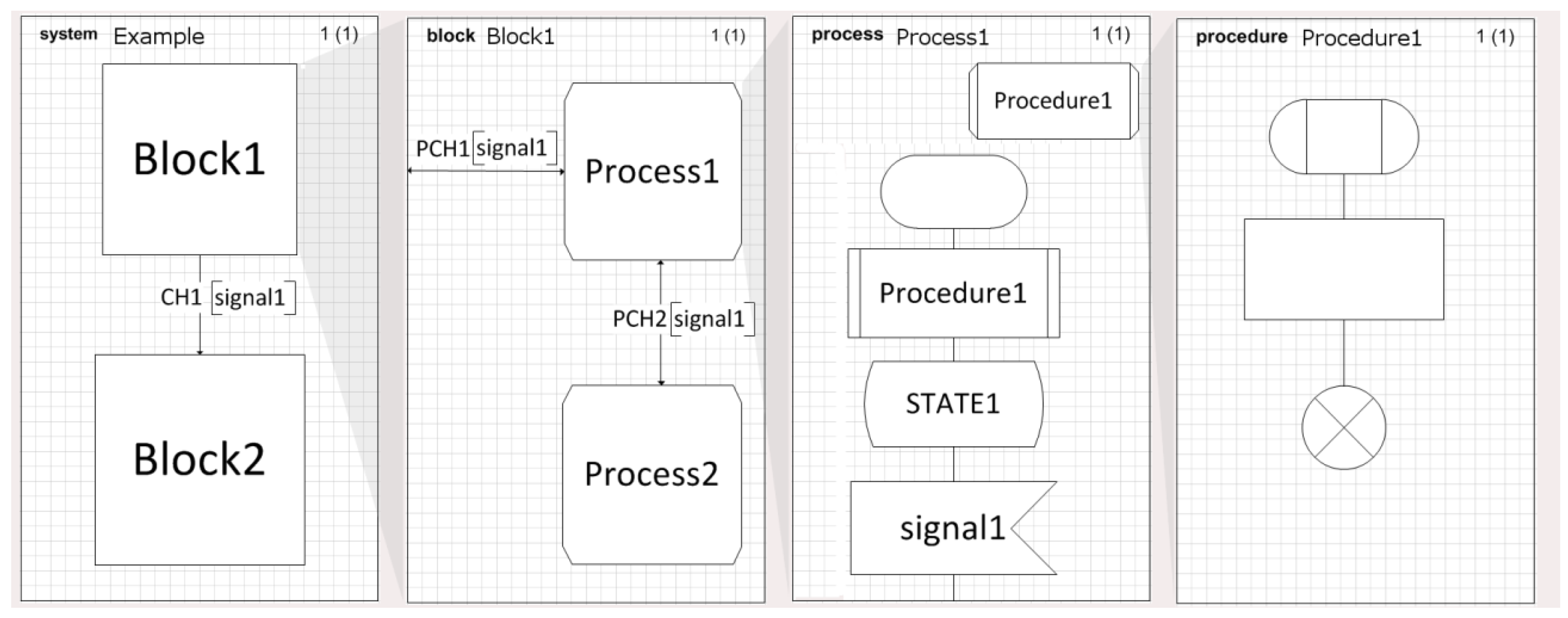

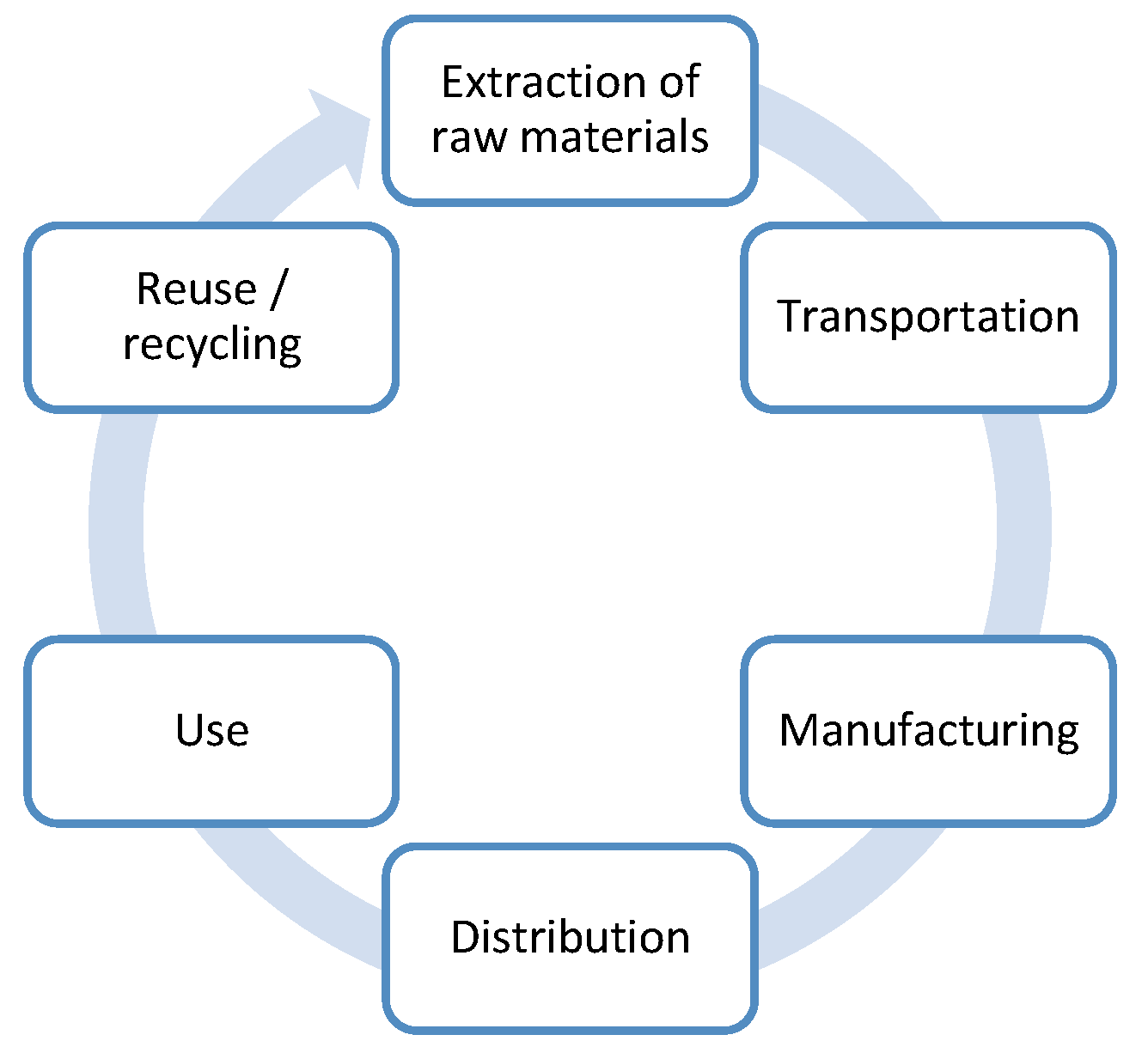
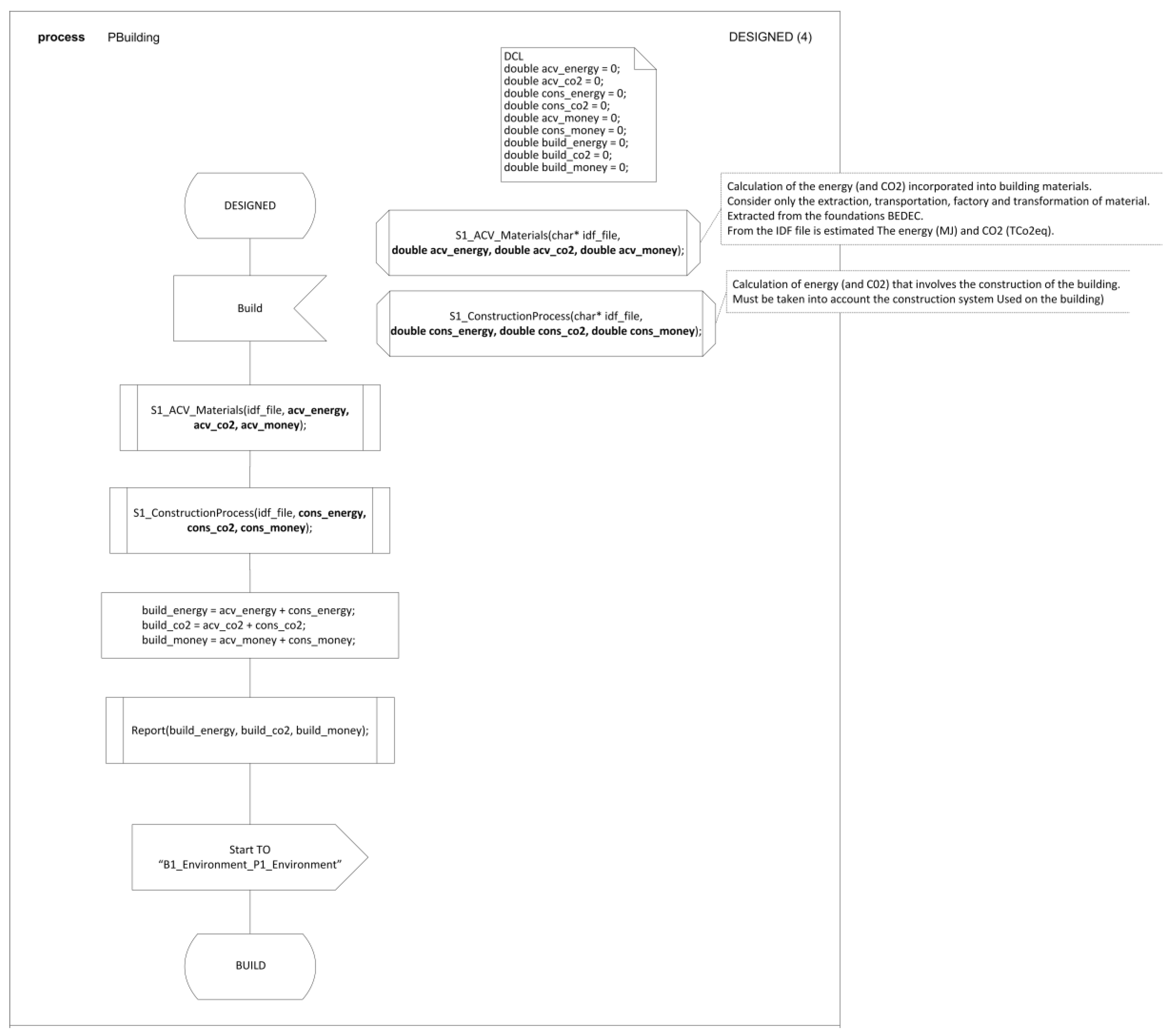
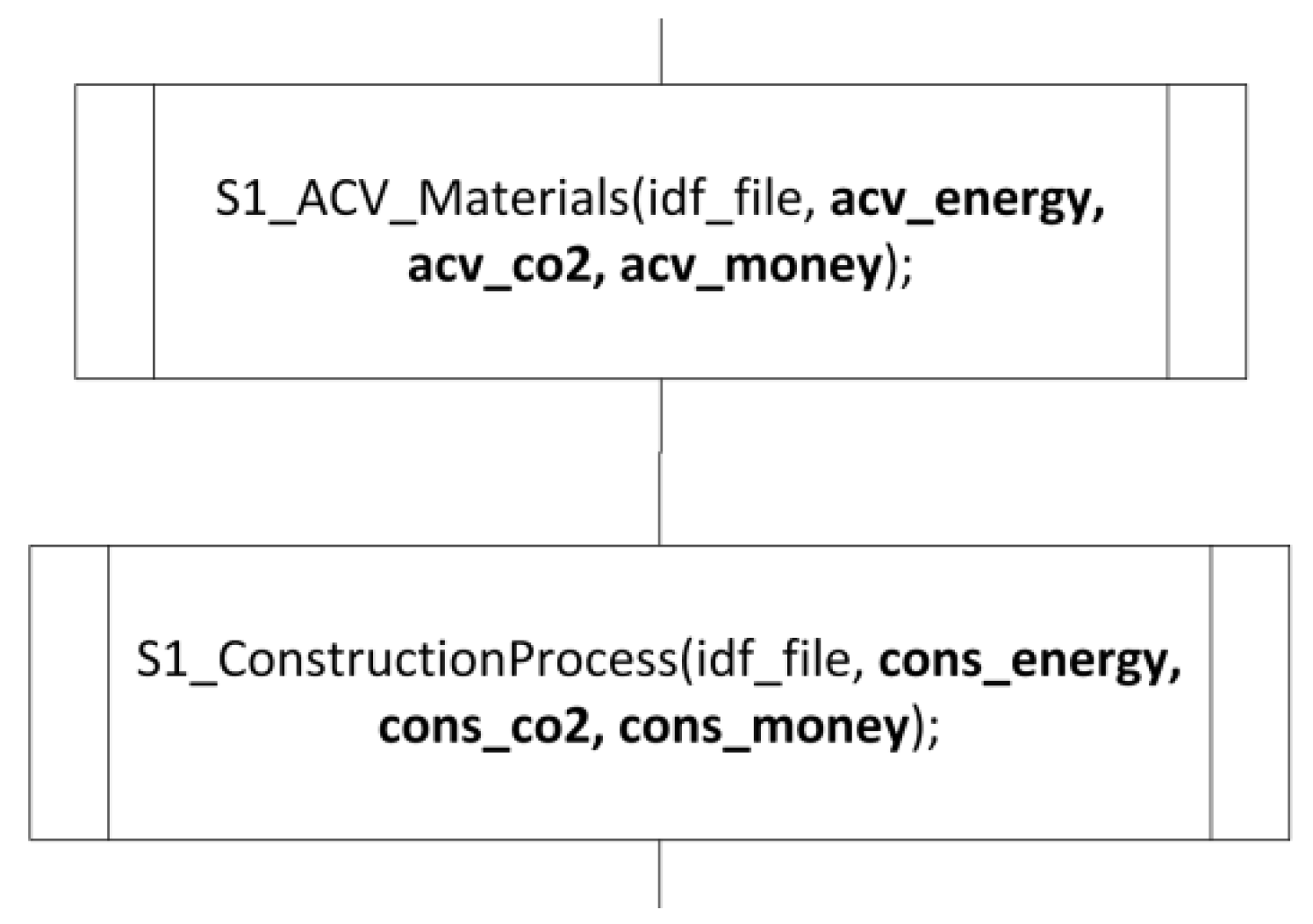

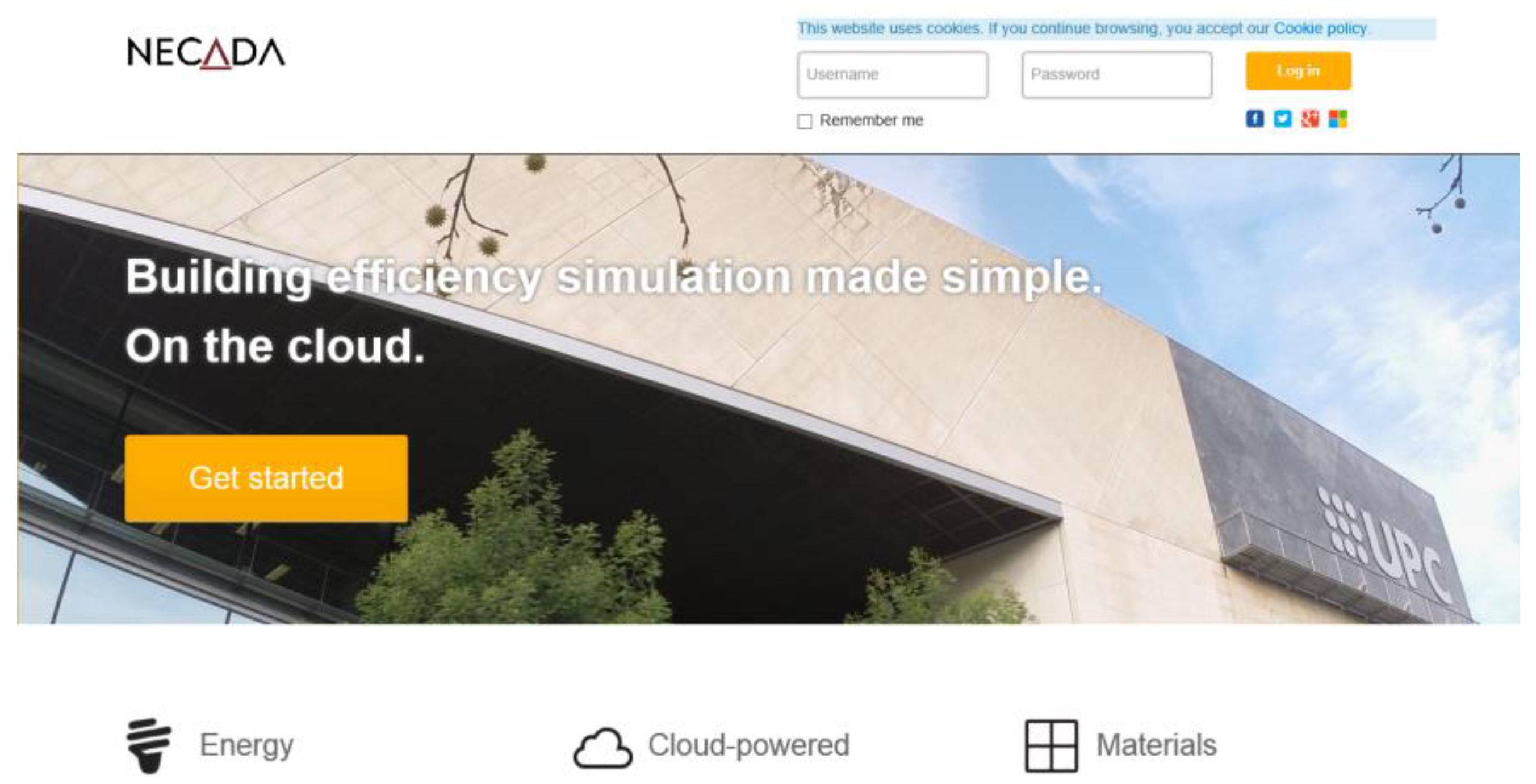
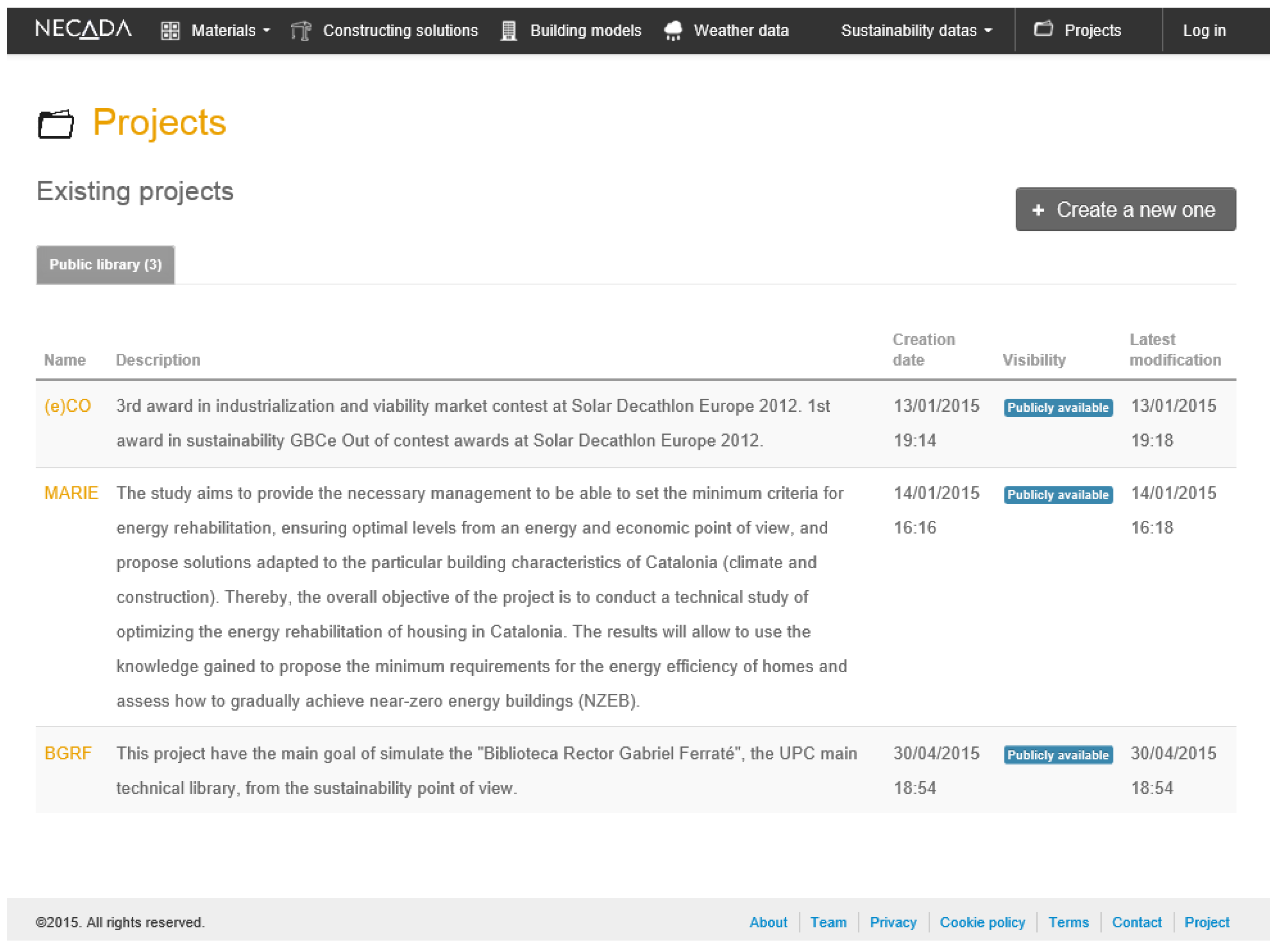

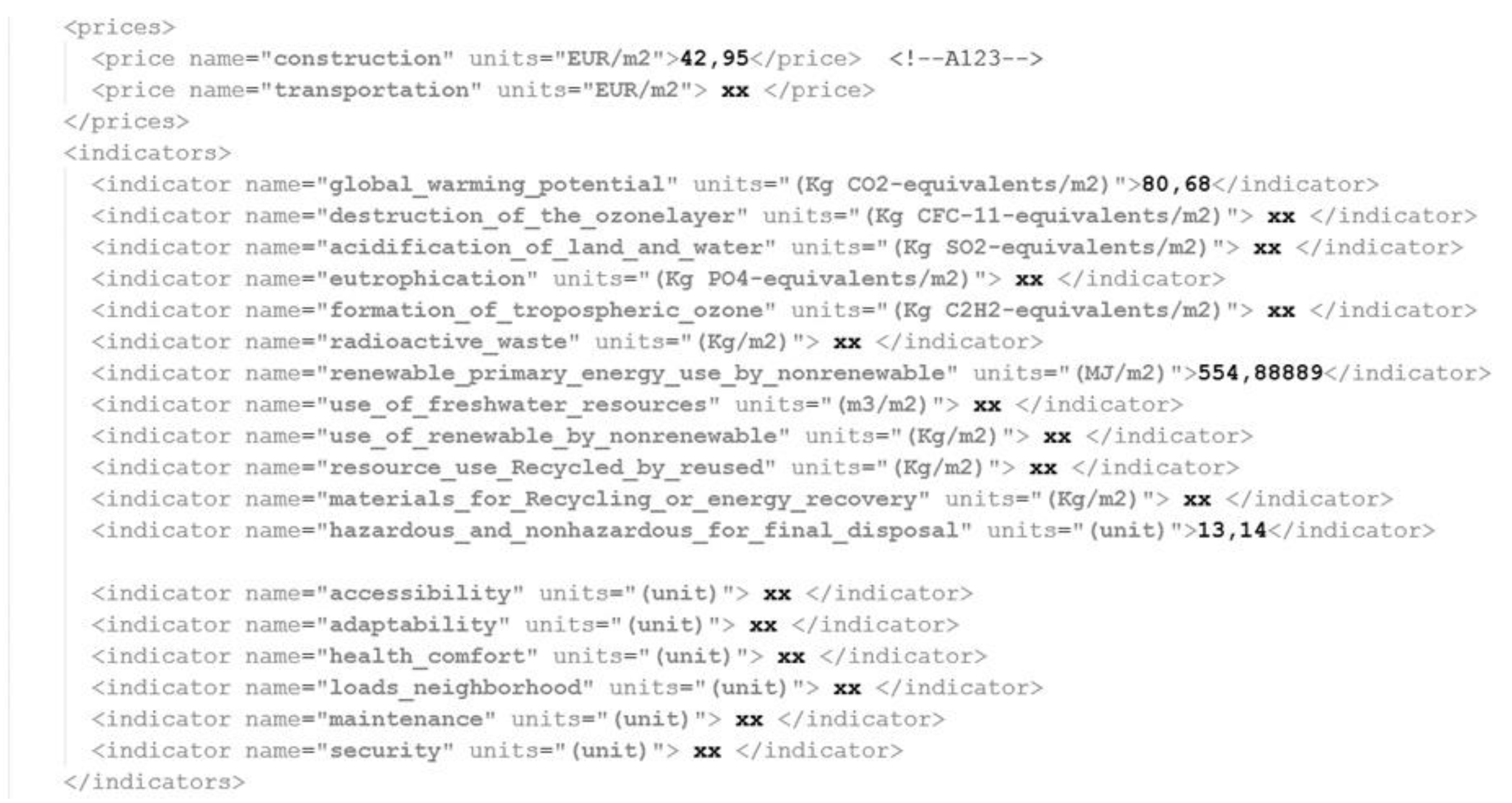
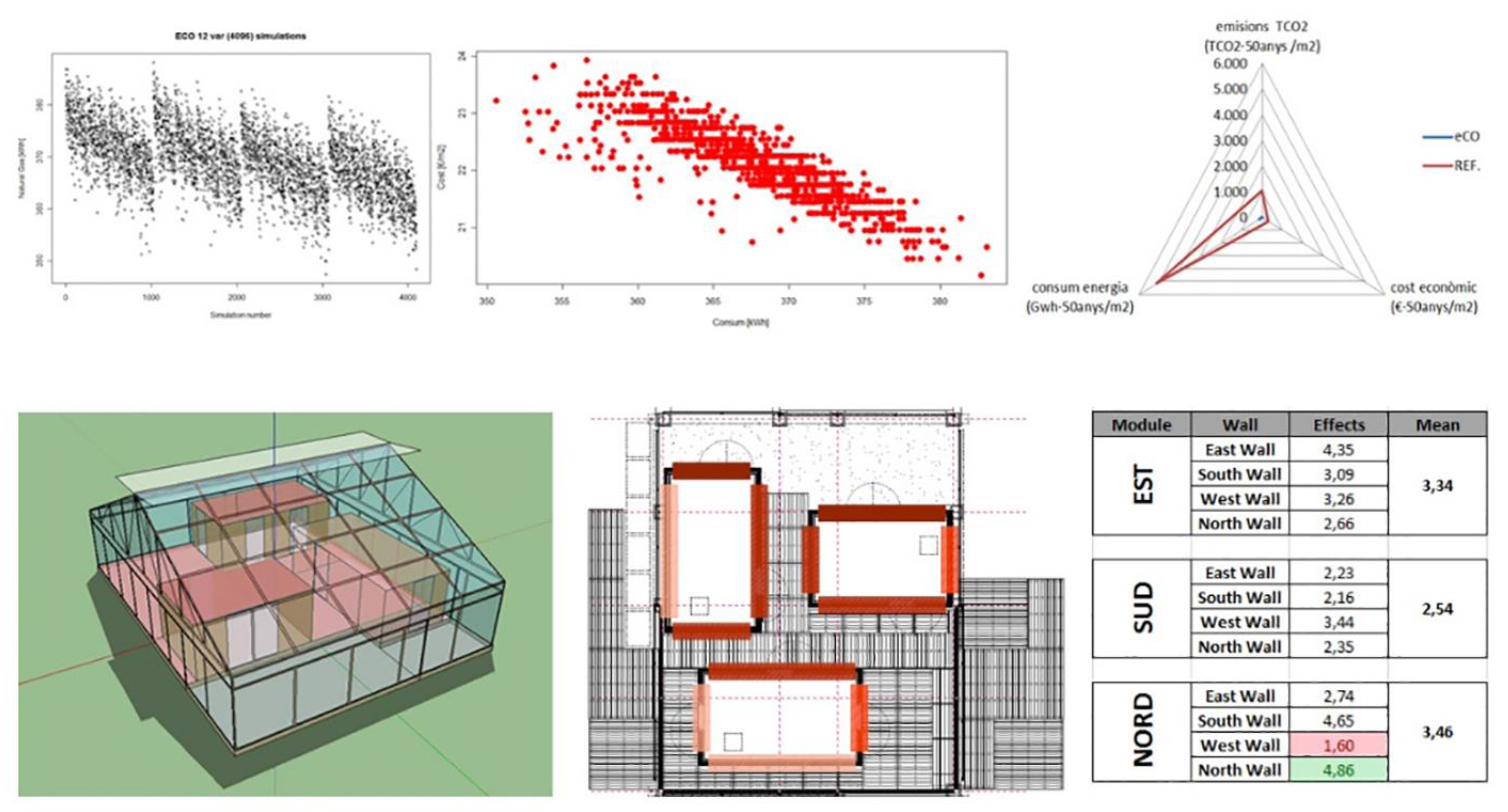
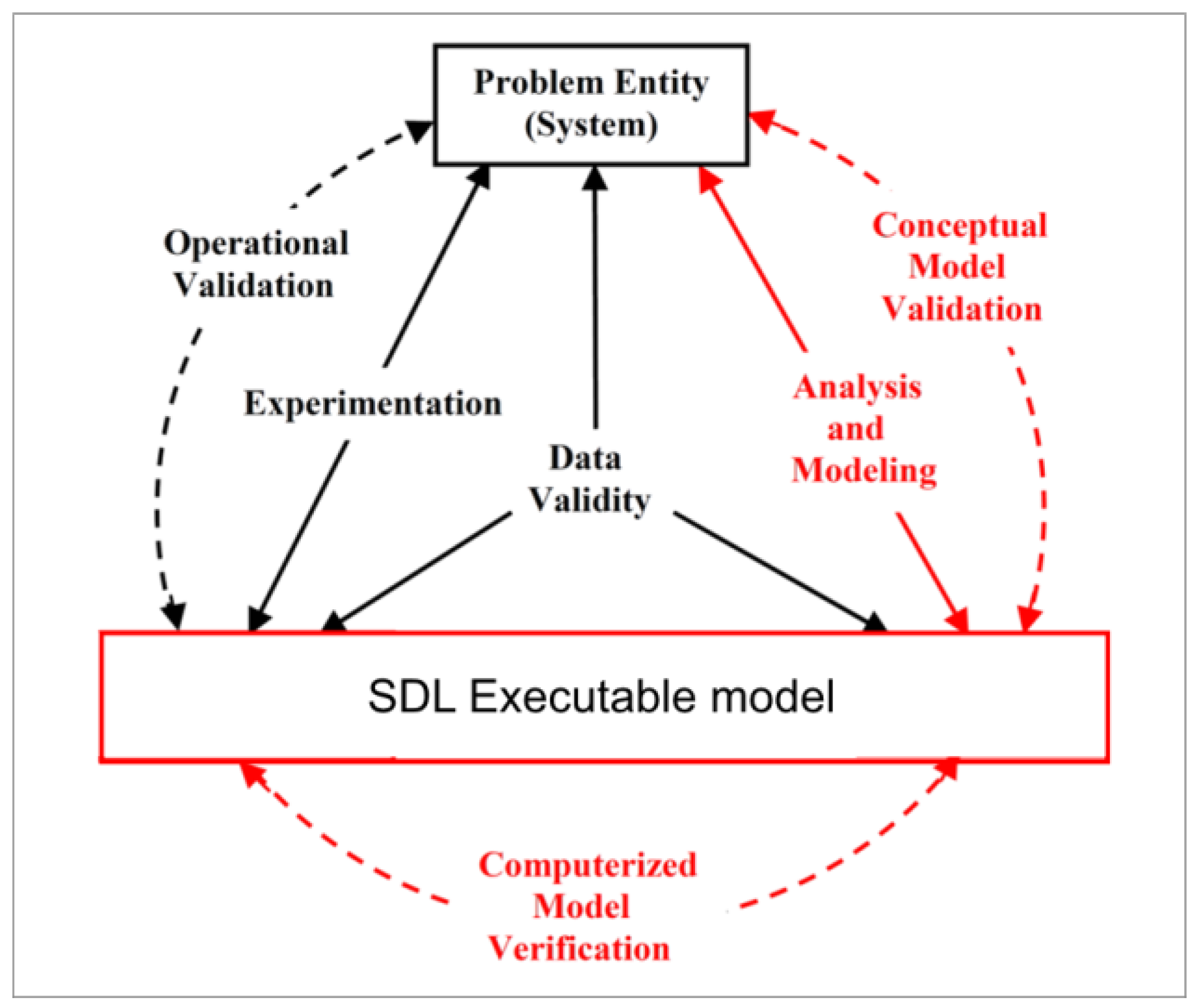
| Variable | Description |
|---|---|
| *.epw file (climate file) | This file contains the description of the climate that affects the building. In this case, the building is located in Madrid, Spain. |
| *.idf file (model file) | This file contains the structure of the building (geometry, materials, etc.). |
| Materials and constructing solutions database | Needed for the calculations and is obtained using a dedicated database or connected to external databases like the one provided by the ITeC [42]. |
| Variable | Description |
|---|---|
| Energy Impact | The energy demand of the model will be determined to minimize the building’s energy (energy for heating and cooling). |
| Environmental Impact | Analysis of the environmental impact of materials used (Global Warming, Ozone Depletion, etc.) according to an LCA (Life Cycle Assesment). |
| Economic Impact | Analysis of the economic costs of the LCA process, the materials used in construction, and the energy and material demand of the prototype (described in the standard prEN 15643-4 [43]). |
| Social Impact | Analysis of the social impacts of the building on its immediate environment (impacts can be positive or negative) |
© 2017 by the authors. Licensee MDPI, Basel, Switzerland. This article is an open access article distributed under the terms and conditions of the Creative Commons Attribution (CC BY) license (http://creativecommons.org/licenses/by/4.0/).
Share and Cite
Fonseca i Casas, P.; Fonseca i Casas, A. Using Specification and Description Language for Life Cycle Assesment in Buildings. Sustainability 2017, 9, 1004. https://doi.org/10.3390/su9061004
Fonseca i Casas P, Fonseca i Casas A. Using Specification and Description Language for Life Cycle Assesment in Buildings. Sustainability. 2017; 9(6):1004. https://doi.org/10.3390/su9061004
Chicago/Turabian StyleFonseca i Casas, Pau, and Antoni Fonseca i Casas. 2017. "Using Specification and Description Language for Life Cycle Assesment in Buildings" Sustainability 9, no. 6: 1004. https://doi.org/10.3390/su9061004






